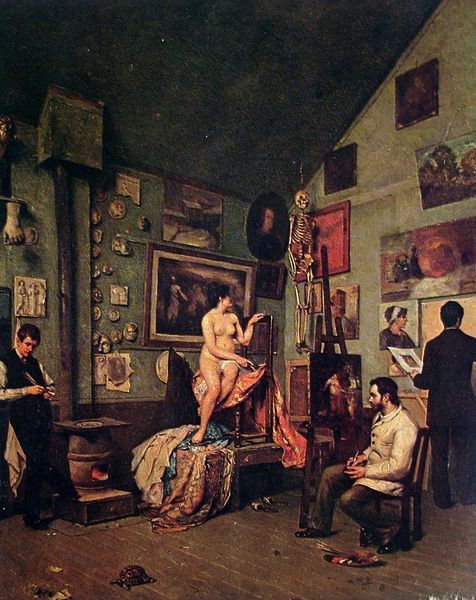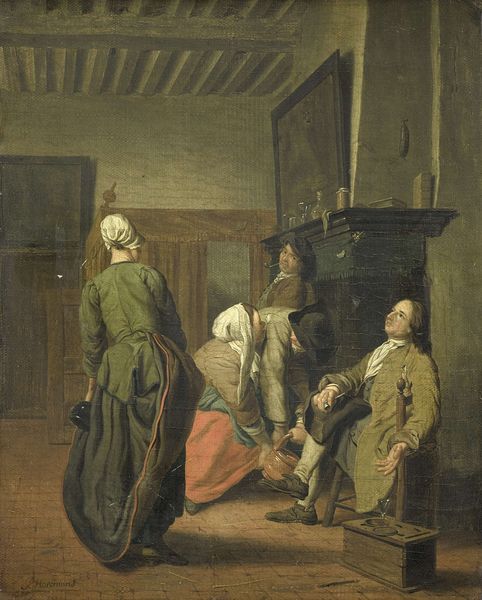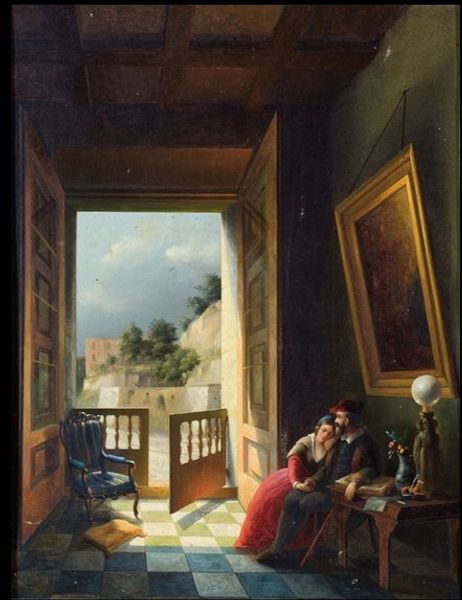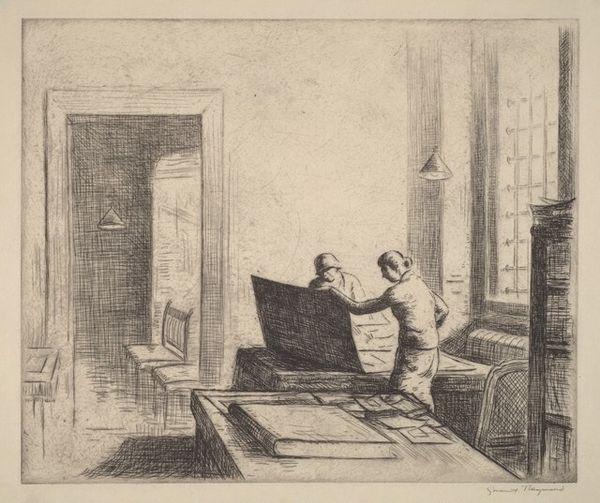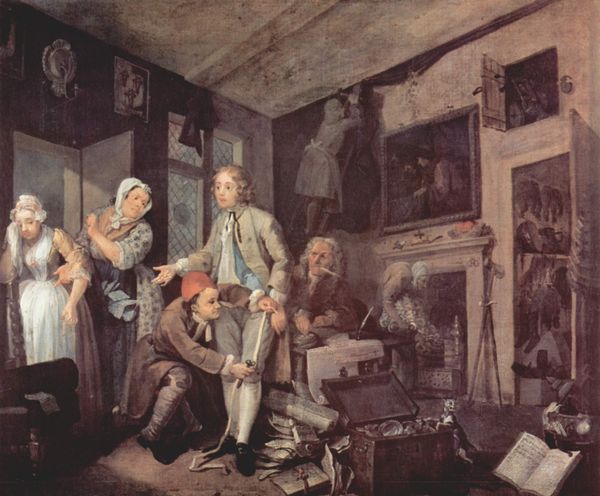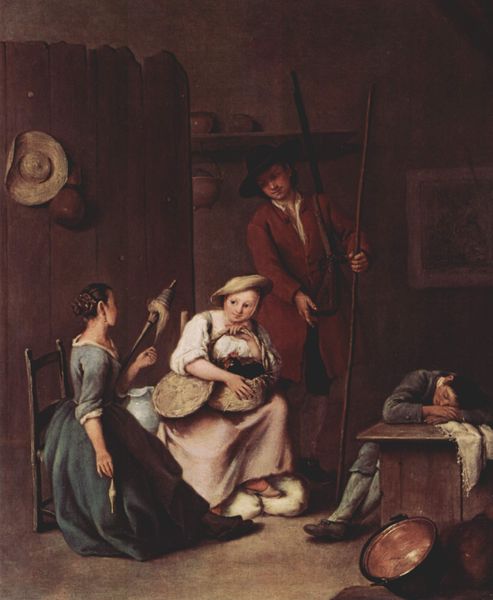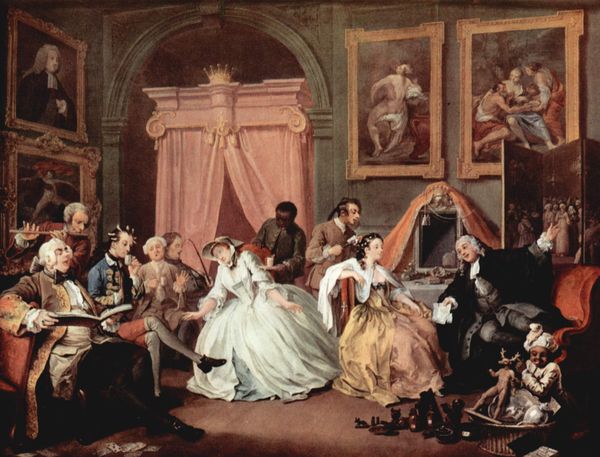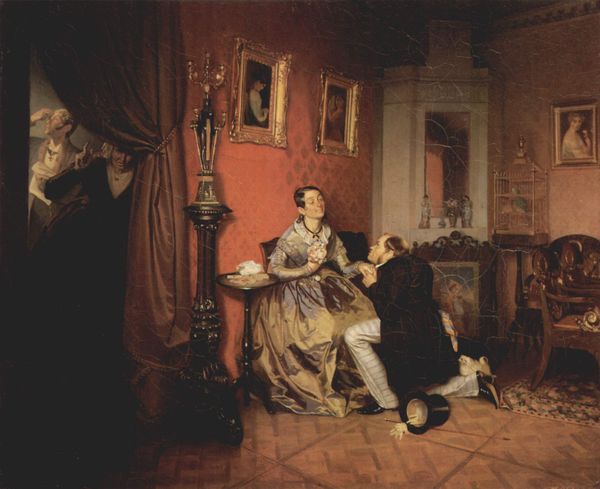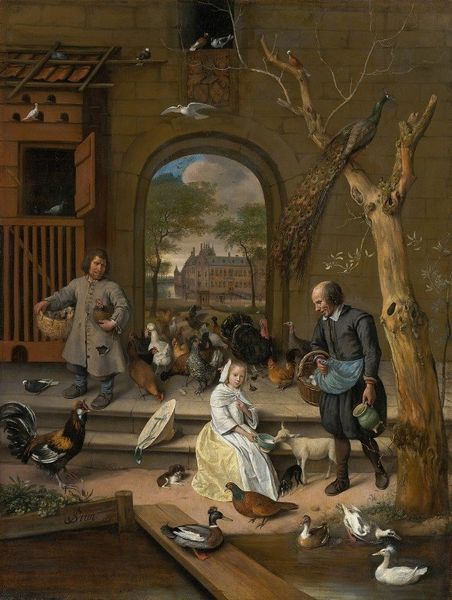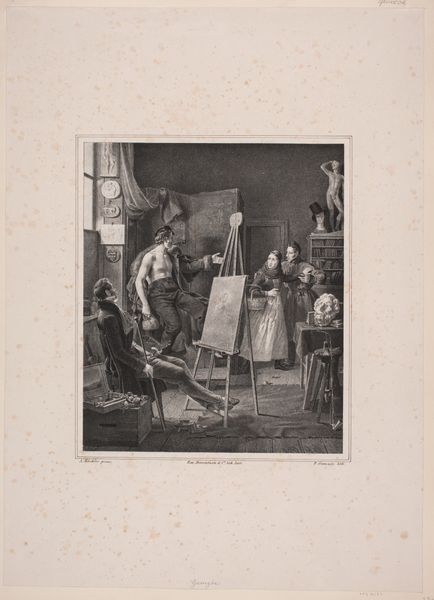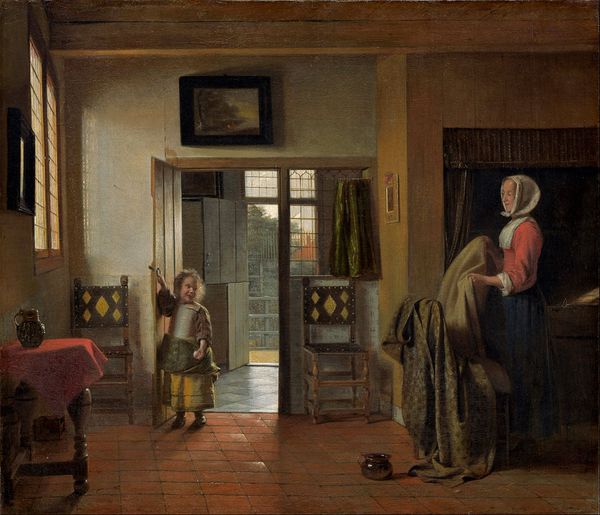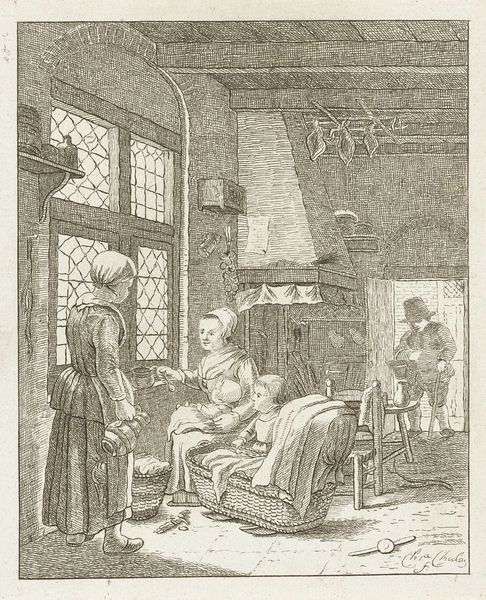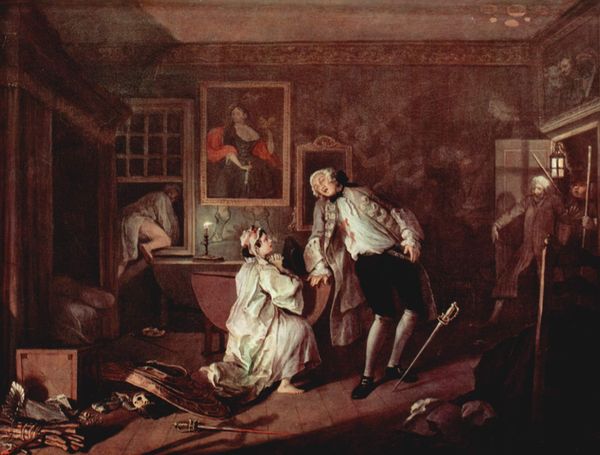
Dimensions: 22.1 x 40.3 cm
Copyright: Public domain
Curator: This oil painting is “The Portrait Painter,” crafted in 1855 by the German artist Carl Spitzweg. It's a charming glimpse into a painter’s studio. Editor: The overwhelming redness of everything immediately strikes me. It almost feels oppressive—like being trapped inside a crimson fever dream. Curator: You're not wrong, the light has this almost claustrophobic warmth. But perhaps it is that intimacy Spitzweg was pursuing. Look at the sheer number of materials on display. Consider that he was largely self-taught. This image then, feels like a demonstration of accumulated craft knowledge. Editor: Right, we see the artist poised with his palette, a sitter perched rather awkwardly, and the suggestion of sketches piled beneath him, maybe discarded concepts. I think the space speaks of an obsessive, dedicated labour, don't you? The painting becomes a sort of document of process, and a meditation on value given both time and skill invested. Curator: Indeed. The romantic style hints at a personal relationship between the creator, the model, and the art. Though, this might be a tongue-in-cheek commentary, no? Are we idealising artists' lives or merely acknowledging their dedication to craft in often isolated circumstances? Editor: Possibly a touch of both. Spitzweg’s detail focuses our attention less on art’s high-minded symbolism and more on what is available materially. It reminds us of the simple, almost earthy components from which beauty is conjured. A bird outside the window seems like a reference to simple elements. The canvas, oil, and, of course, light which defines the subject within that very contained workspace. Curator: And maybe the painter, the labourer within it? This scene sparks consideration of the artist’s identity, don’t you think? He peers so studiously towards his subject with brush in hand...as if about to transcribe life with delicate purpose! I would hope Spitzweg felt connected, beyond materials, to the art. Editor: Or perhaps as connected as a bricklayer feels towards mortar? Spitzweg brings focus towards physical act and material process, making “The Portrait Painter” something more down-to-earth, than a celestial form of artistic genius! I am struck. Curator: Agreed, I guess it boils down to that lovely question: isn’t beauty made with as much "earthiness" as ingenuity?
Comments
No comments
Be the first to comment and join the conversation on the ultimate creative platform.
